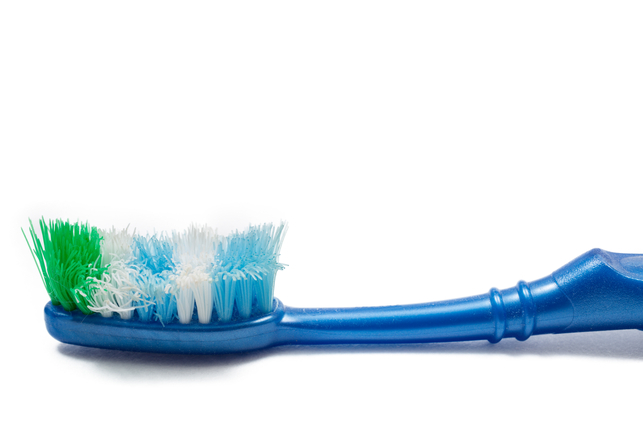The Missing Toothbrush Manual: Toothbrush Care 101
May 11th, 2017
Did you know that harmful microorganisms can live on your toothbrush? These dirty little organisms can cause infection, or lead to more serious disease. The American Academy of Pediatric Dentistry (AAPD) recommends that everyone brush their teeth twice per day, for two minutes at a time. But, brushing your teeth is only as effective as your toothbrush. Below, we discuss how to care for your toothbrush, so that it stays clean and effective.
How to Keep Your Toothbrush Clean
To get the most out of your toothbrush, it’s important that you take proper care of it. Here are a few simple ways to ensure that your toothbrush has a healthy lifespan.
1 – Rinse after use. After you brush your teeth, thoroughly rinse the bristle to clean them of toothpaste and debris. Sometimes, debris can remain in a toothbrush after use, and damage the bristles.
2 – Never share your toothbrush. If you share your toothbrush, you risk contracting unhealthy germs from the other person, which can ruin your toothbrush by contamination. To avoid getting sick and sharing disease, stick to your own toothbrush.
3 – Air-dry your toothbrush. After you’re done brushing, be sure to let your toothbrush air dry, rather than placing the head in a dark, contained holder. If you put a wet toothbrush in a container, bacteria can grow on the toothbrush head and cause you to become sick. The best way to prevent bacterial growth is by letting your toothbrush air dry in an upright position in a vanity or closet, away from toilet spray.
When to Replace Your Toothbrush
There are a few signs that will indicate it’s time for a new toothbrush. Generally speaking, if any of the following signs presents themselves, it’s time to get a new toothbrush.
1 – Lost bristles. If bristles begin falling out, then it’s time to get a new toothbrush. Loose bristles indicate sufficient use and toothbrush age. Additionally, you don’t want to risk swallowing small pieces of synthetic polymers.
2 – Frayed bristles. When the bristles on your toothbrush no longer hold their shape, and they begin to plume outward, then they are no longer effective. Once your toothbrush head begins to lose shape, then it’s time to get a new toothbrush.

3 – Replace it if it’s older than 3 months. If your toothbrush is older than 3 months, then it’s likely that one of the two indicators above has occurred. Frayed or not, we typically advise that our patients trade out their old toothbrush for a new one every 3 – 4 months.
4 – Dispatch it after a recent illness. If you have recently been sick, then it’s time to trade out your toothbrush. Bacteria and germs from an illness can be passed from your mouth to your toothbrush and survive for weeks
Take Care of Your Toothbrush
Remember to brush your teeth twice per day for two minutes at a time. After you’re done brushing, thoroughly clean your toothbrush, and look for signs of it aging. After it’s dry, store your toothbrush in an airtight container to help prevent nasty bacteria from infesting the bristles.




